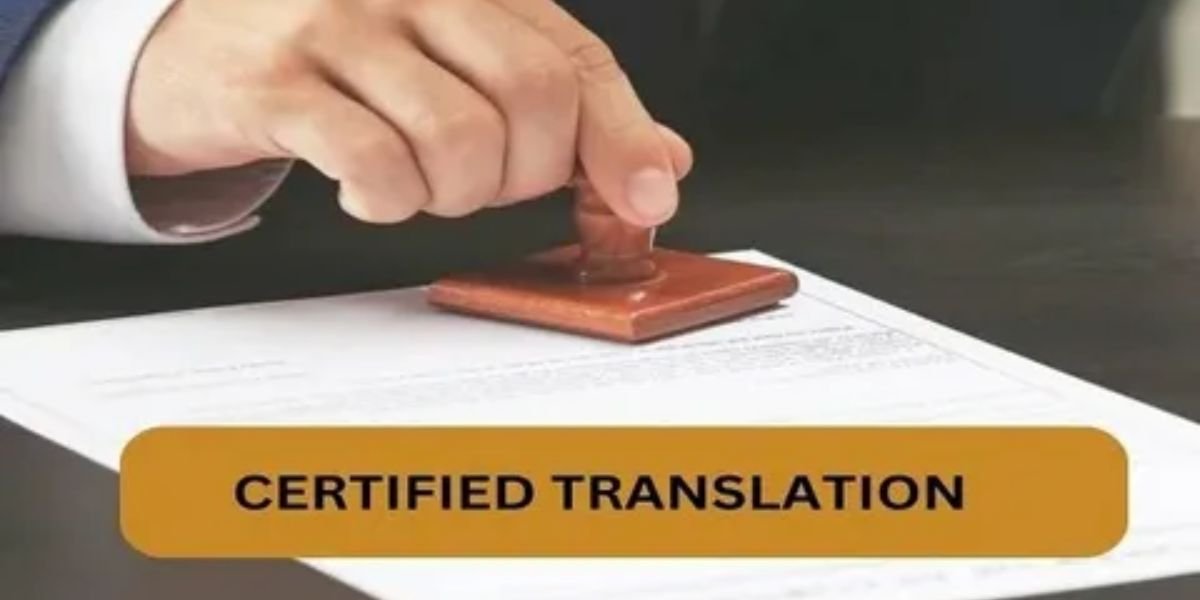Submitting a certified translation can feel like crossing a minefield: one misstep and the immigration officer, registrar, or admissions clerk will stamp “Rejected.” While many rejections stem from small oversights, they all cost time, money, and sometimes the entire opportunity you were pursuing.
One way to avoid these pitfalls is to consider online professional translation services by Rapid Translate, which specialize in producing accurate, certified translations that meet strict institutional standards. Below you’ll find the ten most frequent rejection triggers we see in 2025, plus actionable remedies you can apply immediately to keep your application moving forward.
The Essentials of a “Reject-Proof” Certified Translation
Before diving into specific pitfalls, recall what a reviewing authority actually wants. A certified translation must:
- Complete every word, stamp, and handwritten note rendered accurately.
- Include a signed statement affirming that the translator is competent and that the translation is accurate and word-for-word.
- Follow any agency-specific formatting rules (for instance, USCIS requires the certificate to be in English and on the same page or attached).
- It should be submitted along with a clear scan or photocopy of the original document.
If you keep those pillars in mind, the fixes below will make even more sense.
10 Common Rejection Triggers and Practical Fixes
Every authority, whether it’s USCIS, a state court, or a university registrar, rejects translations for surprisingly similar reasons. The good news? Nearly all of them are preventable with a careful pre-submission review and, when necessary, a quick revision from your translator. Let’s walk through the top ten culprits and the specific steps you can take to eliminate each risk.
1. Missing or Inadequate Certification Statement
A “certification statement” is not optional. If the translator forgets to add it or uses vague wording, USCIS, Canadian IRCC, or most courts will reject the file outright.
Fix: Use a template that contains these exact elements: translator’s name, signature, date, address (or company letterhead), and a declaration of competency and accuracy. Rapid Translate and other reputable services embed a legally compliant certificate automatically, but if you’re DIY-ing, copy the language straight from the target agency’s website.
2. Translator Credentials Can’t Be Verified
Some authorities, especially academic evaluators, want proof that the translator is qualified (e.g., ATA membership, sworn status, or a verifiable company). A cousin who “speaks both languages” won’t cut it.
Fix: Attach a short résumé or credential reference for the translator, or choose a provider whose credentials are searchable online. For sworn translations in Spain or France, only a government-authorized translator’s seal is acceptable.
3. Word-for-Word Accuracy Was Sacrificed
Summaries, paraphrases, or omissions even of “irrelevant” numbers invite suspicion. Immigration agents compare the translation to the original and flag anything that doesn’t align line-by-line.
Fix: Instruct your translator to replicate everything: signatures, dashes, stamps, even watermarks (“[stamp: illegible]” if necessary). Review the final file yourself; if you see text on the original that hasn’t been echoed, send it back for revision.
4. Source Document Was Illegible
A blurry passport scan or a scan taken at an angle can cause mistranslations or force the translator to insert “[illegible],” which reviewers hate.
Fix: Provide a 300-dpi or higher scan taken on a flatbed scanner, not a phone. If a section truly is unreadable, say, old ink faded, obtain a fresh certified copy from the issuing authority before translating.
5. Names and Dates Don’t Match Supporting Papers
Even a harmless typo that turns “José” into “Jose” or flips day-month order may appear as fraud or raise identity concerns.
Fix: Give the translator a list of all proper nouns exactly as they appear on your other application documents. For dates, specify whether you need the original format kept (e.g., 31/05/1993) or converted to the target country’s convention (May 31, 1993). Consistency is your shield.
6. Wrong File Format or Page Layout
Some agencies require a single PDF, others forbid double-sided prints, and a few want an attached certificate instead of a combined file. Ignoring these quirks can trigger rejection despite a perfect translation.
Fix: Download the official document checklist for your target agency. Match their page order, margins, and file naming rules. If scanning multiple pages, verify that they appear in the correct order when opened on a phone and a computer.
7. Notarization Was Required, But Missing
While USCIS no longer mandates notarization, many state courts and some foreign embassies still do. Submitting a mere certification when a notarized statement was required guarantees a bounce-back.
Fix: Check whether the request letter or statute cites “notarized translation.” If yes, add the notary service before submission. Services such as Rapid Translate can append a notary seal within 24 hours for a modest surcharge, or you can take the signed certificate to a local U.S. notary.
8. Expired or Incorrect Apostille/Legalization Chain
When documents travel across borders, you may need an apostille or consular legalization to validate the translator’s signature. Submitting an old or missing apostille is a fast track to rejection.
Fix: Confirm the destination country’s Hague status. If it’s a Hague member, obtain an apostille from the Secretary of State in the translator’s jurisdiction after notarization. If not, follow the embassy’s multi-step legalization process. Start early; some embassies take weeks.
9. Translated Copy Was Altered After Certification
After getting the certified PDF, applicants may combine pages, shrink images, or add comments. Any changes made after certification will make the signature and timestamp invalid, and file metadata can show this.
Fix: Treat the certified file as immutable. If you need changes, request a new version from the translator. For large immigration packages, label the file but never open it in a PDF editor; use your application portal’s merge tool instead.
10. Outdated Agency Guidelines Ignored
Rules shift. In mid-2024, USCIS updated its format guidance, and in early 2025, several Canadian provinces introduced e-signature verification for translators. Sending a translation that met last year’s rules can still get you rejected today.
Fix: The week you plan to file, re-download the official instructions. Search the agency’s site for “translation requirements” with the current month and year. If you’re using a professional service, ask whether their certificate template reflects the latest guidelines reputable providers update automatically.
Final Checklist Before You Hit Submit
Pause and run through this pre-submission checklist:
- Does every word, number, and stamp from the original appear in the translation?
- Is the certification statement signed, dated, and in English?
- Are translator credentials or a company letterhead present and verifiable?
- Is the file format, page order, and naming convention exactly what the receiving authority demands?
- If required, is a notary seal, apostille, or consular legalization attached?
- Have you confirmed that the guidelines you’re following are dated no earlier than 2025?
Answer “yes” to each, and you’ve effectively neutralized the ten most common rejection triggers. That means fewer sleepless nights and a smoother path toward your visa, court case, or degree evaluation.
When in doubt, invest in a specialized provider that offers a formal acceptance guarantee. You’ll pay a little more up front, but you’ll save a lot more by not having to wait. The real cost of a rejected translation isn’t the fee; it’s the time and chances that are lost.
Now take a deep breath, check your packet again, and send it in with confidence. May your certified translations go smoothly.










